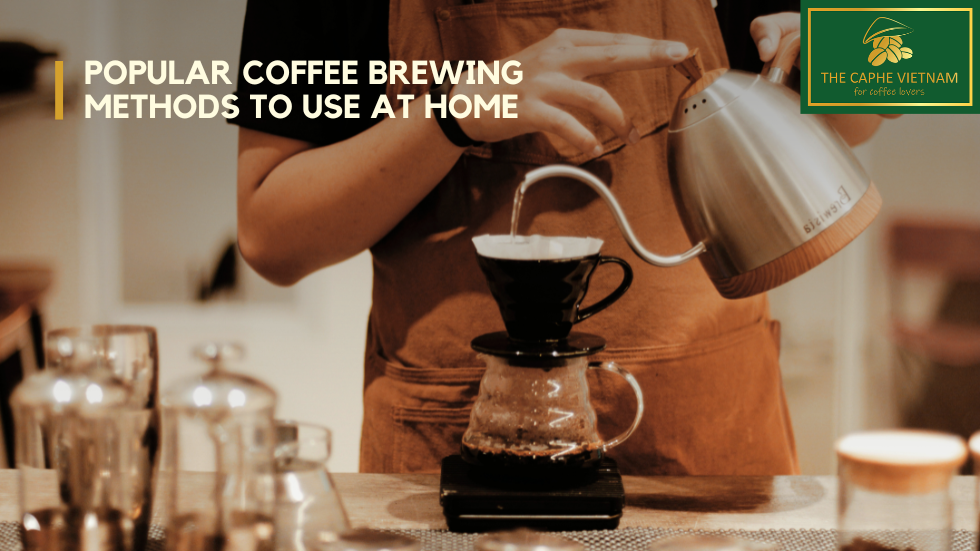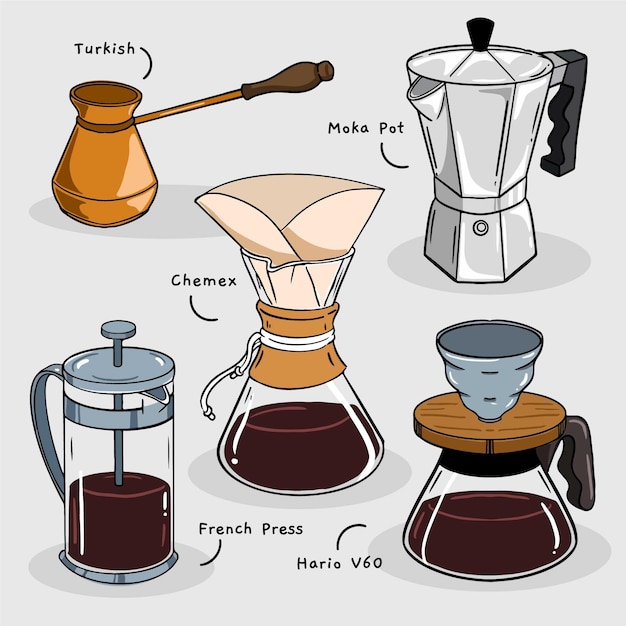Uncovering the Art of Coffee Brewing Methods: Tips for every single Fanatic
Uncovering the Art of Coffee Brewing Methods: Tips for every single Fanatic
Blog Article
The Science Behind Coffee Developing: Just How Temperature and Time Affect Your Drink
Comprehending the science behind coffee developing exposes that temperature level and time are not plain variables yet crucial aspects that dictate the drink's taste account and overall quality. The optimal developing temperature level typically drops in between 195 ° F and 205 ° F, while the duration of removal differs considerably across different methods. This interaction of aspects can result in a mug that is either fascinating or unsatisfactory. As we discover the nuances of these aspects, the question develops: just how can one properly equilibrium temperature and time to achieve that excellent brew?
The Chemistry of Coffee Extraction
The chemistry of coffee extraction digs right into the detailed processes that change raw coffee beans right into the fragrant beverage enjoyed worldwide. This change primarily includes the solubility of different substances present in the beans, which are influenced by factors such as work dimension, water quality, and the brewing method utilized.
During the brewing procedure, hot water functions as a solvent, removing soluble compounds, consisting of caffeine, acids, sugars, and lipids, from the coffee premises. Each compound adds to the taste profile, scent, and body of the final beverage. Acids are liable for tasty and intense notes, while oils contribute to a rich mouthfeel.
The first stages of developing remove acids and sugars, leading to a positive level of acidity, while extended extraction can lead to bitterness due to over-extraction of undesirable substances. Recognizing these chemical interactions is important for enhancing developing strategies, as the balance between removal time and water temperature can significantly influence the general high quality of the coffee.
Suitable Brewing Temperatures
Locating the appropriate brewing temperature level is necessary for unlocking the full possibility of coffee tastes and fragrances - coffee brewing methods. Research shows that the optimum range for developing coffee lies in between 195 ° F to 205 ° F(90 ° C to 96 ° C) Within this variety, the removal process efficiently dissolves the desirable soluble compounds in coffee beans, resulting in a savory and well balanced mug
Brewing at reduced temperature levels, such as listed below 195 ° F(90 ° C ), might result in under-extraction, generating an acidic and weak mixture with soft tastes. On the other hand, brewing at temperature levels going beyond 205 ° F(96 ° C) can bring about over-extraction, creating a bitter and rough preference due to the extreme dissolution of unwanted substances, such as tannins.
In addition, the suitable brewing temperature can differ depending upon the coffee bean type and roast degree. Lighter roasts typically profit from slightly higher temperatures to improve their complicated taste profiles, while darker roasts may be better suited to reduced temperature levels to mitigate anger.
Ultimately, preserving precision in brewing temperatures is important for accomplishing an unified balance of tastes, making sure that every mug of coffee provides a satisfying sensory experience.
Impact of Brewing Time
Developing time plays a pivotal duty in figuring out the taste profile and overall quality of coffee. The extraction procedure, which affects the preference, aroma, and body of the beverage, is largely dependent on the length of time the coffee premises are in contact with water. Shorter developing times can result in under-extraction, leading to a weak or sour flavor, as not enough soluble compounds are liquified. On the other hand, extended brewing can cause over-extraction, where unfavorable compounds are launched, leading to an astringent or bitter taste.
Optimum developing time differs relying on the method made use of and the grind size of the coffee. A French press normally requires about 4 mins, while coffee address removal is generally completed within 25 to 30 secs. It is vital to adjust brewing time in combination with various other variables, such as water temperature level and coffee-to-water ratio, to accomplish the wanted flavor account.
Understanding the influence of brewing time enables coffee fanatics to refine their brewing techniques, inevitably enhancing the sensory experience of their mug (coffee brewing methods). With mindful interest to this variable, one can unlock the full capacity of the coffee, exposing its one-of-a-kind attributes and nuances
Developing Techniques and Their Impacts

As an example, methods like French press and cool mixture enable a much longer steeping time, leading to a fuller body and robust flavor because of increased removal of oils and soluble solids. Conversely, espresso brewing uses high stress and a shorter removal time, generating a concentrated shot that emphasizes extreme tastes and a rich crema.
Pour-over strategies, such as Chemex or V60, supply an even more controlled extraction process, permitting the maker to manipulate flow rate and water distribution, which can boost illumination and quality. At the same time, percolation approaches cycle water with the coffee premises several times, causing a stronger, usually bitter flavor.
Last but not least, the usage of paper filters versus steel filters can additionally affect why not try here the final preference; paper filters commonly produce a cleaner cup by trapping oils and great bits, while steel filters permit even more oils to go through, adding to a fuller mouthfeel - coffee brewing methods. Comprehending these nuances can boost the coffee experience dramatically
Tips for Improving Your Brew
A well-executed brew can transform also the most basic coffee right into a remarkable experience. To attain this, interest to information is vital. Start with high-quality, freshly roasted beans, as their taste profile reduces in time. Grind the beans simply before brewing to make best use of quality, making certain the work dimension matches your developing method-- coarser for French press and finer for coffee.
Water high quality plays an important duty; usage filteringed system water devoid of impurities. The perfect developing temperature ranges between 195 ° F and 205 ° F(90 ° C to 96 ° C ) Also hot can burn the coffee, while as well trendy may under-extract flavors.
Timing is just as essential. For immersion methods, soaking for three to five mins is optimum, whereas drip methods usually take around 5 mins. Explore brew times to locate your recommended stamina.

Final Thought
In recap, the complex partnership in between temperature level and time is vital in the coffee developing process. Complying with ideal developing temperatures in between 195 ° F and 205 ° F, alongside precise timing customized per approach, makes certain the preferred taste account is attained. Understanding these clinical concepts equips people to improve their developing methods, inevitably causing an extra satisfying and well balanced coffee experience. Proficiency of these variables is vital for any type of coffee enthusiast seeking excellence in their beverage.
Recognizing the scientific research behind coffee developing discloses that temperature level and time are not plain variables however pivotal elements that determine the drink's flavor profile and overall quality. Recognizing these chemical interactions is critical for enhancing developing techniques, as the equilibrium in between extraction time and water temperature can considerably affect the general high quality of the coffee.Developing time plays a pivotal function in identifying the flavor account and overall high quality of coffee. By focusing on why not look here these components-- bean top quality, grind dimension, water temperature, steeping time, and ratio-- you can boost your coffee brewing procedure, resulting in a regularly exceptional mug.
In summary, the complex partnership between temperature and time is extremely important in the coffee developing procedure.
Report this page